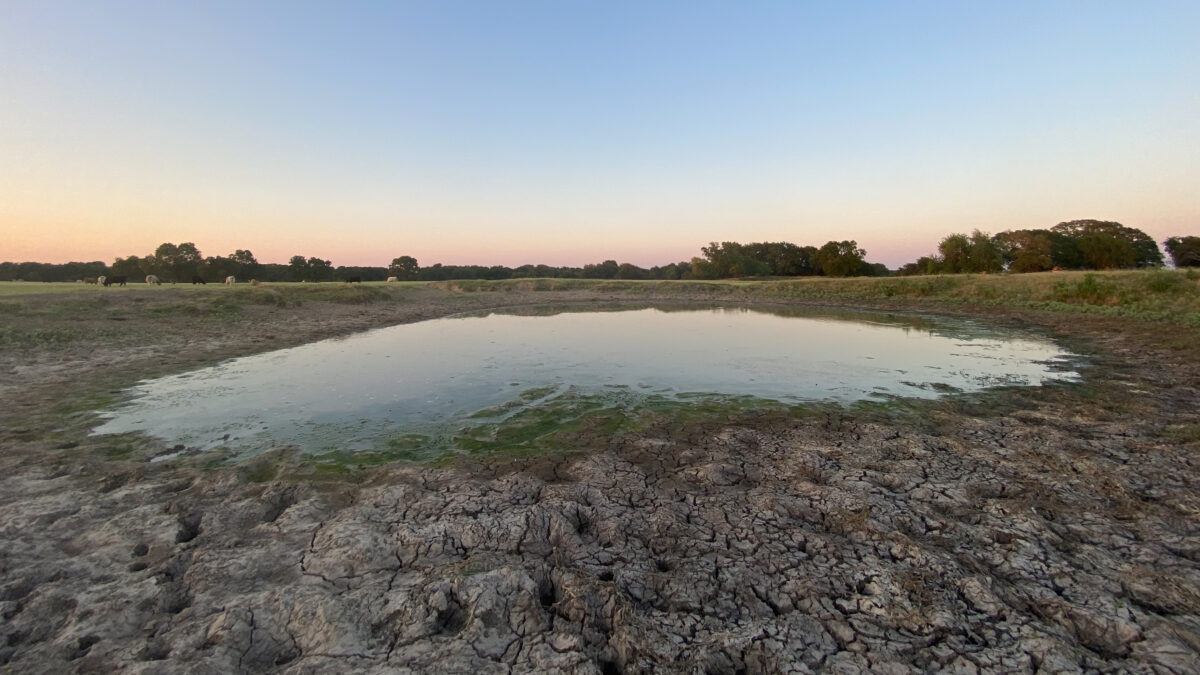Terribly Dry
TOPICS
Controlled burning on farmsGuest Author
Special Contributor to FB.org

photo credit: Texas Farm Bureau, Used with Permission
Guest Author
Special Contributor to FB.org
By John Schlageck
Unless something changes in the moisture situation, Barb Downey and her husband, Joe Carpenter, will not burn their grassland in the Kansas Flint Hills this season. The ranch couple report no (moisture) run-off event in more than a year on their native grassland in Riley and Wabaunsee counties.
Every spring across the vast, open Flint Hills grasslands, fires blaze for miles. The flames lick at the blue Kansas sky as the brown, dry grass crinkles, crackles and bursts into orange.
Long before civilization came to the prairie, fires were ignited by lightning storms and the charred prairie restored the health of the native grasses.
Cattlemen like this east-central Kansas couple understand that controlled burning remains a range management tool that helps maintain the economic viability of the Flint Hills. Fire remains an essential element of the ecosystem.
Long before civilization came to the prairie, fires were ignited by lightning storms and the charred prairie restored the health of the native grasses. Native Americans set the first prairie fires. They used the fire to attract bison for easier hunting.
Controlled burning by those who live on the tall-grass prairie of the Flint Hills is an annual event designed to mimic nature’s match. It’s part of a tradition – part of the culture of the communities and the people who inhabit this region of the state.
This annual pasture burning only occurs for a few days each year. It is not a procedure that is drawn out and lasts for weeks. Weather conditions dictate the length of the burning season most years.
Not every cattleman burns his pastures every year. Instead, individual ranchers and landowners survey and decide each spring, which pastures will benefit and produce a healthier, lush grass for livestock after burning. Often neighbors plan and burn together, giving them more hands to ensure a safe, controlled burn.
Because of continued dry conditions, Downey and Carpenter fear they would not be able to control the burn this season.
“It’s so dry and the winds blow nearly every day,” Barb says. “At the ground level, there’s no humidity in the thatch in our native grasses.”
Downey believes her Flint Hills region remains in an extended drought. She’s not counting on moisture any time soon unless this weather pattern turns around drastically – and right away.
For weeks the ranchers have watched forecasts serve up the possibility of rain in the seven to 10-day forecasts. By the time that period passes, there’s nothing. No moisture for the bone-dry Flint Hills.
“The overriding reason we will not burn our grasslands this spring is because we’re going to need every little bit of forage we can get our hands on,” Barb explains.
“We don’t care if it’s last year’s grass. At this point we need forage of any kind for our livestock.”
Downey is the fourth generation in the ranching business. Her daughter represents the fifth. Decades of experience have provided this cattle family with the know-how and knowledge to plan for their cattle enterprise.
The current drought conditions began on their Riley and Wabaunsee county ranch back in 2005. Except for a couple of years of adequate moisture, drought has been a way of life for more than a decade.
“Twenty twelve marked the peak of this extended drought here in the Flint Hills,” Barb says. “Right now, we’re already worse this year than in 2012.”
Continued dry conditions indicate burning this March or April would ensure little, if any, pasture regrowth. Downey and Carpenter are already operating in “drought-crisis mode.” Irrigated land that would ordinarily soon be planted to corn will be planted to forage this spring.
“We’re beyond the idea of burning,” Barb says. “Conditions today remain too dry. We’re not even receiving what I call ‘band-aid’ rains or brief showers, to help us along.”
Some of the older cows will be culled earlier this year on the Downey and Carpenter ranch. They continue to look at options to lighten the feed load for their herd.
“We’re planning for the worst, and hoping for better times ahead,” Barb says. “Without continued moisture and soon – we’re headed for trouble.”
John Schlageck is a leading commentator on agriculture and rural Kansas. Born and raised on a diversified farm in northwestern Kansas, his writing reflects a lifetime of experience, knowledge and passion.
Trending Topics
VIEW ALL